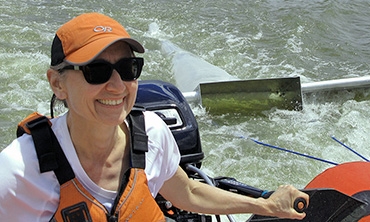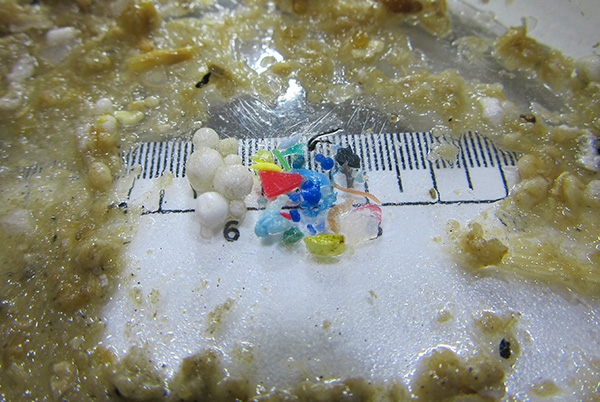Plastic is everywhere. In bags. In bottles. In clothes, toys, disposable cups and artificial turf. It’s in cosmetics and soap, too (those little exfoliating microbeads).
Plastic is even pervasive in New York’s Mohawk River. It’s just too small to be noticeable most of the time.
Jacqueline Smith, research professor of geology, is trying to figure out where these aptly named microplastics are coming from.
“Microplastics are plastic particles less than 5 mm, including particles deliberately manufactured to be small and those that result from breakdown or wear of larger pieces of plastic,” she explained. “Microplastic particles were found in every sample of floating material and sediment that we collected between Rome and Cohoes, N.Y.”
“Abundance varied, however, with the greatest numbers of particles found in samples from Utica and Schenectady,” Smith continued. “Now, we’re focusing on the microplastic abundance in approximately 30 tributaries to the Mohawk River. We’ll be looking at where the microplastic loads are heaviest so that we can better determine the sources of this pollution.”
Why?
“In simplest terms, microplastics are garbage, and New York State regulations prohibit the discharge of garbage in surface waters,” Smith said. “Plastic particles are man-made and have the potential to alter the physical, biological and chemical integrity of water, making them pollutants in the eyes of Federal entities like the EPA.”
For good reason.
“Important findings about potential adverse effects of microplastic on wildlife, human health and the environment emerge almost daily,” Smith said. “Some studies already suggest that negative effects in aquatic organisms can take various forms, such as brain changes and inhibited growth.”
And what affects animals in rivers could impact animals in oceans thousands of miles away.
“Microplastic pollution in the oceans is considered ubiquitous. The EPA webpage cites references estimating that 90 percent of plastic in the pelagic marine environment (floating material) are microplastics,” Smith explained. “The oceans are endpoints for material transported by rivers.”
“Microplastics have also been found in a range of water bodies in New York, including Lake Erie and Lake Ontario, various tributaries to the Great Lakes, the Mohawk River, the Alplaus Kill and the Hudson River,” she added. “Plastic is so abundant in our lives that it should probably not be a shock to learn that plastic debris is finding its way into every aspect of our environment. But I still do find it shocking.”
Smith’s work is supported by grants from the New York State Department of Environmental Conservation’s Mohawk River Basin Program. The funds will also create two research positions for Union students this summer and fall.



